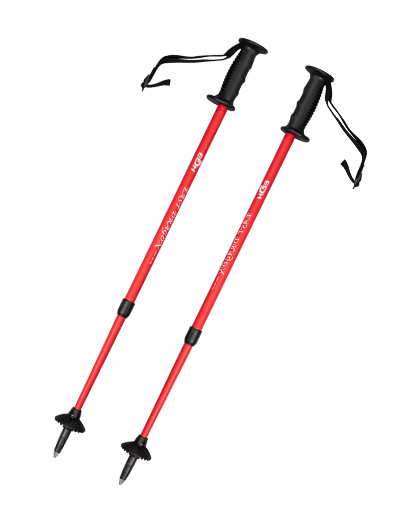

When choosing a Cross Country Ski Pole, there are several factors to consider. For example, is your new cross country pole the type of pole for extreme outdoor sports, or an entry level product for weekend recreation? These are just a few of the things to consider when shopping for a Cross Country Ski Pole.
The first rule of thumb when picking Cross Country Ski Poles is that longer poles give more pulling power, but short poles are more maneuverable, and are also easier to handle, so whether you're new to the sport or frequently heading into the wilderness, shorter is usually better. Any good ski store should be able to cut lengths to the correct length without negatively impacting the pole itself. Be sure to consult with your Cross Country Ski Pole manufacturer to make sure they offer different types of lengths and cuts for all their products. They should be able to assist with choosing the right length and cutting process.

The next factor to consider is whether or not your Cross Country Ski Pole is meant for use in powder or on groomed trails. This will also impact the length and width of the pole, which in turn affects its pull strength.
Cross Country Ski Poles are designed to pull heavier snow, so it's important to measure the area where you plan to use your new pole before ordering it. Some models are made with very thin metal strips that are glued onto a steel shaft, and others are hollow inside. Some models are also constructed from lighter metals.
Some Cross Country Ski Poles can even be used on groomed trails, as long as the surface is not slippery. However, be aware that a thinner pole may have more resistance to wear and tear, and is not able to support the weight of heavier loads.
Some Cross Country Ski Poles features a larger, heavier crossbar. These models can support a much larger load but are more difficult to control when moving across rugged terrain.
Some Cross Country Ski Poles also features a "peep hole" in the center of the pole, which provides riders with a view of the slope beneath them. This feature is useful for spotting any obstacles as well as identifying areas where you need to stop and go.
Finally, be aware of the features that you find on the grips of the poles you purchase. As previously mentioned, the crossbar grip is the most common but there are also other unique options available.
Crossbar grips are not only easy to install but can even be adjusted by hand or remotely from your computer. This feature is beneficial if you don't have the time or the expertise to perform the installation yourself. If you choose a pole that has a finger loop, then the pole can be easily locked or unlocked from either side of the grip itself.
High quality cross country ski poles will come with a carrying bag. This allows you to keep the pole in one piece, while transporting it with ease.
The best models will also feature a lock that keeps the pole together until you arrive at your destination. This can be very useful if you plan on taking your ski pole with you on trips to unfamiliar locations.
Most poles have several locking points in place, which makes it difficult to steal the pole. Some models will have a key feature that also provides protection against theft.
It's also important to consider how the pole attaches to your bindings. Many models have a thumb release latch that can be easily inserted into the binding. In this case, your pole will come ready to use, making it simple to remove your bindings and start skiing without having to worry about putting them back on.